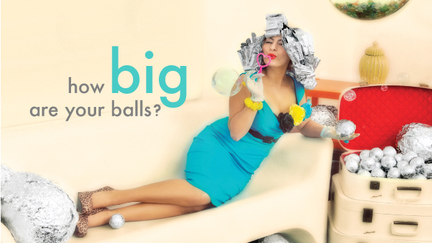It may seem no price is too high for the woman flaunting her freshly styled hair. She's worth it, all-too-familiar commercials tell us, and naturally, so are you.
Australians have flocked to hair salons, highlighting their locks, for around thirty years. Foiling has become popular thanks to the simplicity it offers.
But while aluminium foil gives with one hand, it takes with the other, stripping the earth of precious resources. Processing foil costs us massive amounts of energy and water. -->
Australians have flocked to hair salons, highlighting their locks, for around thirty years. Foiling has become popular thanks to the simplicity it offers.
But while aluminium foil gives with one hand, it takes with the other, stripping the earth of precious resources. Processing foil costs us massive amounts of energy and water. -->
Aluminium is made from a mineral called bauxite, which is mined all over the world. Each year the Australian hairdressing industry churns out more than 1 million kilos - using the same amount of energy for eight hundred homes and pumping carbon dioxide into the air.
This robs the planet of 250 litres of water for every kilo of standard foil. A huge amount, especially as scientists predict that an El Nino event is around the corner, and this could worsen drought conditions.
Aluminium also takes a whopping five hundred years to degrade, polluting the soil around it. Experts say it’s a waste to use high amounts of energy to make low-grade products.
Dr Damien Giurco, from the Institute of Sustainable Futures, says the problem lies with Australia using coal fired power to produce aluminium, which creates a lot of pollution.
“Aluminium is very energy intensive to make the first time it’s made, but then it’s great to recycle, because it only uses five percent of the energy to recycle it,” Dr Giurco says.
Australian brand Refoil is shaking up the industry with a recycling campaign targeting colourists who care about the environment.
Refoil launched a few years ago, after finding that only 1 percent of hairdressers recycle foil. But there’s more to their solution than dumping foil in the yellow bin and hoping for the best.
“We’ve taken a year to research how we can solve this enormous waste problem. We developed a sustainable foiling concept called Refoil,” co-founder Paul Frasca explains.
Refoil uses aluminium which has already been recycled and doesn’t seem to lose its quality.
The foil is crushed into balls that meet recycling standards. The Materials Recovery Centre found that foil is too fragile to be picked up by a machine called the Eddy Current, so something needed to change. As trial and error would have it - the bigger the balls, the better. Cue slogan: how big are your balls?
Foil globes which are the size of a tennis ball, or larger, are easily handled by the machine. Putting eight rolled foil sheets (or more) into the recycling bin is best.
“Aluminium is not magnetic, so you need to put special processes in place to separate it, and it’s easier when rolled into a ball,” Dr Giurco says.
The Refoil campaign urges hair-stylists to recycle their foil - pushing the industry to reduce waste made in the name of beauty, one shiny ball at a time.
For more information, go here.
Disclaimer: I helped create promotional content for Refoil (voice-over)
This robs the planet of 250 litres of water for every kilo of standard foil. A huge amount, especially as scientists predict that an El Nino event is around the corner, and this could worsen drought conditions.
Aluminium also takes a whopping five hundred years to degrade, polluting the soil around it. Experts say it’s a waste to use high amounts of energy to make low-grade products.
Dr Damien Giurco, from the Institute of Sustainable Futures, says the problem lies with Australia using coal fired power to produce aluminium, which creates a lot of pollution.
“Aluminium is very energy intensive to make the first time it’s made, but then it’s great to recycle, because it only uses five percent of the energy to recycle it,” Dr Giurco says.
Australian brand Refoil is shaking up the industry with a recycling campaign targeting colourists who care about the environment.
Refoil launched a few years ago, after finding that only 1 percent of hairdressers recycle foil. But there’s more to their solution than dumping foil in the yellow bin and hoping for the best.
“We’ve taken a year to research how we can solve this enormous waste problem. We developed a sustainable foiling concept called Refoil,” co-founder Paul Frasca explains.
Refoil uses aluminium which has already been recycled and doesn’t seem to lose its quality.
The foil is crushed into balls that meet recycling standards. The Materials Recovery Centre found that foil is too fragile to be picked up by a machine called the Eddy Current, so something needed to change. As trial and error would have it - the bigger the balls, the better. Cue slogan: how big are your balls?
Foil globes which are the size of a tennis ball, or larger, are easily handled by the machine. Putting eight rolled foil sheets (or more) into the recycling bin is best.
“Aluminium is not magnetic, so you need to put special processes in place to separate it, and it’s easier when rolled into a ball,” Dr Giurco says.
The Refoil campaign urges hair-stylists to recycle their foil - pushing the industry to reduce waste made in the name of beauty, one shiny ball at a time.
For more information, go here.
Disclaimer: I helped create promotional content for Refoil (voice-over)

 RSS Feed
RSS Feed
